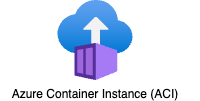Kubernetes, often referred to as K8s, has transformed the container orchestration realm, establishing itself as a pivotal technology. Yet, the future of Kubernetes is shrouded in uncertainty, prompting contemplation about its continued supremacy in the container orchestration sphere. Will it persevere as a dominant force, or will it grapple with obstacles that could sway its popularity in the forthcoming years? In this comprehensive blog post, we embark on an exploration of the challenges looming over Kubernetes and the tantalising prospects that await on the horizon.

Challenges facing Kubernetes
At their core, microservices are all about breaking down complex applications into smaller, independent pieces, where each microservice is responsible for a specific function or feature, and they communicate with each other through well-defined APIs. This allows for greater flexibility, as updates or changes can be made to individual microservices without affecting the entire application. By understanding the concept of microservices, developers can leverage this architectural approach to build more robust and adaptable applications. As Kubernetes continues to reign as the container orchestration champion, it faces a spectrum of contemporary challenges that demand strategic attention and innovative solutions. The robust and dynamic nature of Kubernetes is juxtaposed with some intricate issues, including but not limited to:
Complexity and learning curve
Kubernetes is renowned for its complexity. Learning to use it effectively takes time and effort. Its constantly evolving nature, with frequent feature updates and deprecations, only adds to the learning curve. Other successful platforms (such as Docker Swarm, Amazon ECS, Apache Mesos) have user-friendly tools, making them more accessible, while Kubernetes still lacks such user-friendliness.
Dependency on add-ons
Kubernetes offers a limited set of native functionality. Many essential features, like scalable monitoring and storage management, require third-party plugins or add-ons. This over-reliance on add-ons complicates Kubernetes deployments, unlike platforms like Linux, which offer more self-contained solutions.
Limitations on workload types
Kubernetes primarily supports container workloads. While it can be extended to accommodate virtual machines and serverless functions, this versatility often demands the use of more add-ons. Additionally, Kubernetes remains Linux-centric, which may not be ideal for organisations with legacy or Windows-based workloads.
Management at scale
As Kubernetes deployments scale up, managing numerous clusters and their interconnections becomes a formidable challenge. Organisations must maintain consistency, reliability, and performance across their distributed environments.
Resource optimisation
Efficiently allocating resources and ensuring that clusters operate at peak efficiency is a perpetual challenge. Overspending on cloud resources and underutilisation of capacity can impact cost-effectiveness.
Integration complexity
The process of integrating Kubernetes with various tools, services, and legacy systems can be intricate. Simplifying and streamlining these integrations is vital for maximising productivity.
Application portability
Achieving true application portability across different Kubernetes distributions and cloud providers is a challenge, as minor differences can hinder seamless migration.
Governance and Compliance
Kubernetes environments must adhere to regulatory requirements and organisational policies. Maintaining governance and compliance in a dynamic containerised landscape can be a complex undertaking.
Adoption of new features
Kubernetes continually introduces new features, and staying updated with these features and effectively integrating them into existing workflows can be a challenge for organisations.
Addressing these challenges and evolving Kubernetes to meet the changing demands of modern IT landscapes remains a critical endeavour. Success in doing so ensures that Kubernetes retains its reputation as a leading orchestration platform for containerised applications.
Promising trends for Kubernetes
As Kubernetes continues to evolve, several key trends are shaping its future, enhancing its capabilities and expanding its role in the IT landscape. Let’s explore these developments.
Multi-cloud and hybrid cloud deployments
As more organisations adopt multi-cloud and hybrid cloud strategies, Kubernetes is becoming crucial for managing workloads across different cloud environments. Kubernetes’ portability makes it well-suited for this role.
Edge computing
Kubernetes is gaining traction in managing workloads at the edge, a field that’s rapidly growing. With edge computing on the rise, Kubernetes is set to play a significant role in handling workloads in distributed environments.
Machine learning integration
Kubernetes is already used to manage machine learning workloads. It’s likely to further evolve in this area, possibly by integrating with popular machine learning frameworks and offering specialised features for machine learning tasks.
Security enhancements
Kubernetes has a strong security foundation, but its security features will continue to evolve. As more organisations rely on Kubernetes, improving security will be a top priority.
Serverless integration
Kubernetes has started integrating with serverless frameworks like Knative, enabling users to run serverless workloads on Kubernetes clusters. This trend is expected to continue, making Kubernetes even more versatile.
Ecosystem growth
The Kubernetes ecosystem will continue to expand, bringing new tools, services, and projects that simplify the deployment and management of containerised applications. These developments will make Kubernetes even more accessible and powerful.
Standardisation
The industry is moving towards standardisation in Kubernetes configurations, application deployment, and best practices. This standardisation will ease organisations’ transition to Kubernetes, reduce complexity, and encourage widespread adoption.
Community innovation
Kubernetes thrives on its vibrant open-source community. As more contributors join the ecosystem, innovative solutions and best practices will emerge, ensuring the platform remains at the forefront of container orchestration.
Conclusion
Kubernetes has had a profound impact on modernising IT infrastructure since its introduction. While it faces challenges like complexity, dependency on add-ons, and limitations on workload types, promising trends such as multi-cloud adoption, edge computing, and machine learning integration make its future bright. As Kubernetes continues to evolve and expand, it remains a powerful tool for managing containerised applications in a rapidly changing technological landscape.
Today and beyond, we can expect Kubernetes to play a pivotal role in container orchestration, enabling organisations to deploy, scale, and manage complex workloads across multiple cloud providers with relative ease. As the technology matures, the industry can anticipate further growth and innovation in the Kubernetes ecosystem.
So, while challenges exist, the future of Kubernetes appears promising, with trends suggesting a continued rise in its popularity and adoption across various industries, including enterprises and smaller businesses. Kubernetes is set to become an even more integral part of the IT landscape, supporting the demands of modern software development and deployment.
If you’re looking to harness the power of Kubernetes in your organisation, LimePoint offers expert guidance and solutions. Connect with us to explore how we can support your Kubernetes journey.





